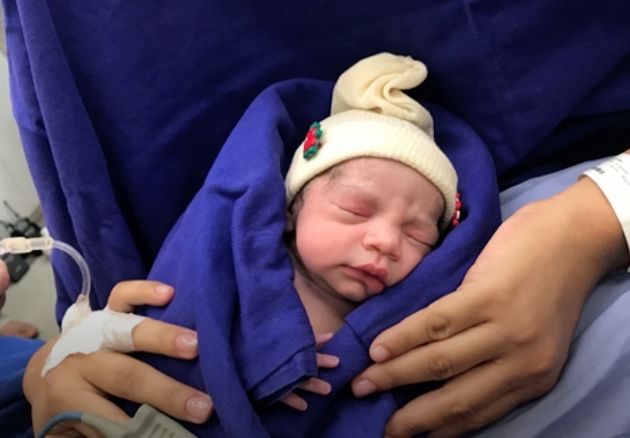A mother has given birth to a healthy baby girl after surgeons implanted a womb in her body taken from a dead person.
The birth, in Brazil, is the first reported involving a deceased donor womb transplant.
Ten previous attempts, in the US, Czech Republic and Turkey, to achieve a live birth using a womb taken from a dead individual, had all ended in failure.
The first birth after a womb transplant from a living donor took place in Sweden in September 2013.
Since then there have been 39 such procedures, resulting in 11 live births.
The recipient in the groundbreaking case was a 32-year-old woman born without a womb due to a rare genetic disorder.
In September 2016 she was given an unexpected chance of motherhood after undergoing the transplant at the Hospital das Clinicas in Sao Paulo.
The uterus was taken from a 45-year-old donor who had died from a brain haemorrhage.

Surgeons spent 10.5 hours plumbing in the organ by connecting veins, arteries, ligaments and vaginal canals.
News of the procedure was disclosed in The Lancet medical journal.
Dr Dani Ejzenberg, from the Faculty of Medicine at Sao Paulo University, who led the team, said: “The use of deceased donors could greatly broaden access to this treatment, and our results provide proof-of-concept for a new option for women with uterine infertility.
“The first uterus transplants from live donors were a medical milestone, creating the possibility of childbirth for many infertile women with access to suitable donors and the needed medical facilities.
“However, the need for a live donor is a major limitation as donors are rare, typically being willing and eligible family members or close friends.
“The numbers of people willing and committed to donate organs upon their own deaths are far larger than those of live donors, offering a much wider potential donor population.”
After surgery, the anonymous recipient remained in intensive care for two days before spending another six days on a specialised transplant ward.
She received five immunosuppression drugs to prevent her body rejecting the new organ, as well as other treatments to combat infection and blood clotting.
Five months after the transplant, the implanted womb appeared to have been successfully incorporated into her body.
Ultrasound scans showed no abnormalities and she was menstruating regularly.
Two months later eight fertilised eggs were implanted into the womb.
The early embryos produced by IVF treatment had been frozen and stored four months before the transplant.
Pregnancy was confirmed 10 days after implantation, said the medical team. No complications were reported other than a kidney infection at 32 weeks that was treated with antibiotics.
A baby girl weighing 2.55kg (6.6lbs) was born by caesarean section after a pregnancy lasting 35 weeks and three days.
During the delivery, the transplanted womb was removed and showed no abnormalities.
After the birth both patient and baby appeared healthy and well.
At the age of seven months and 20 days, when the case report was written, the baby was breastfeeding and weighed 7.2kg (15lbs 14oz).
The authors pointed out that despite its success the procedure involved major surgery, high doses of immunosuppressants, and moderate levels of blood loss.
Future recipients undergoing similar transplants would have to be fit and healthy to avoid complications, they said.
An estimated one in 500 women have no wombs or abnormal wombs due to hysterectomies, inherited disease, malformation or infection.
Before womb transplants became a viable possibility their only options for having a child were adoption or surrogacy.
British expert Andrew Shennan, professor of obstetrics at King’s College London, said: “Uterine transplant and subsequent pregnancies, including from live donors, have previously been reported, but this is the first case of a successful pregnancy from a deceased donor.
“Successful pregnancy, without evidence of any compromise in spite of the uterus (womb) being without oxygen for eight hours before transplant, was unique.
“This opens the possibility of women donating their womb following death, as with many other organs.”
Richard Kennedy, president of the International Federation of Fertility Societies (IFFS), said: “The IFFS welcomes this announcement which is an anticipated evolution from live donors with clear advantages and the prospect of increasing supply for women with hitherto untreatable infertility.”